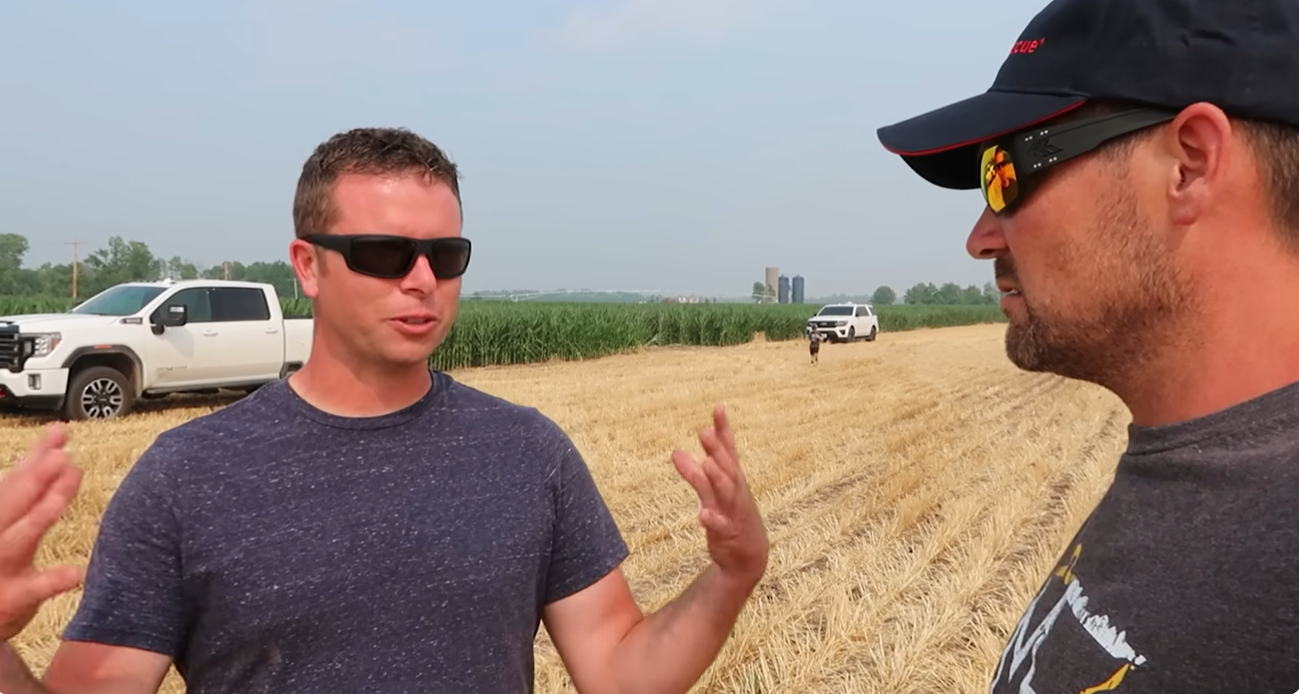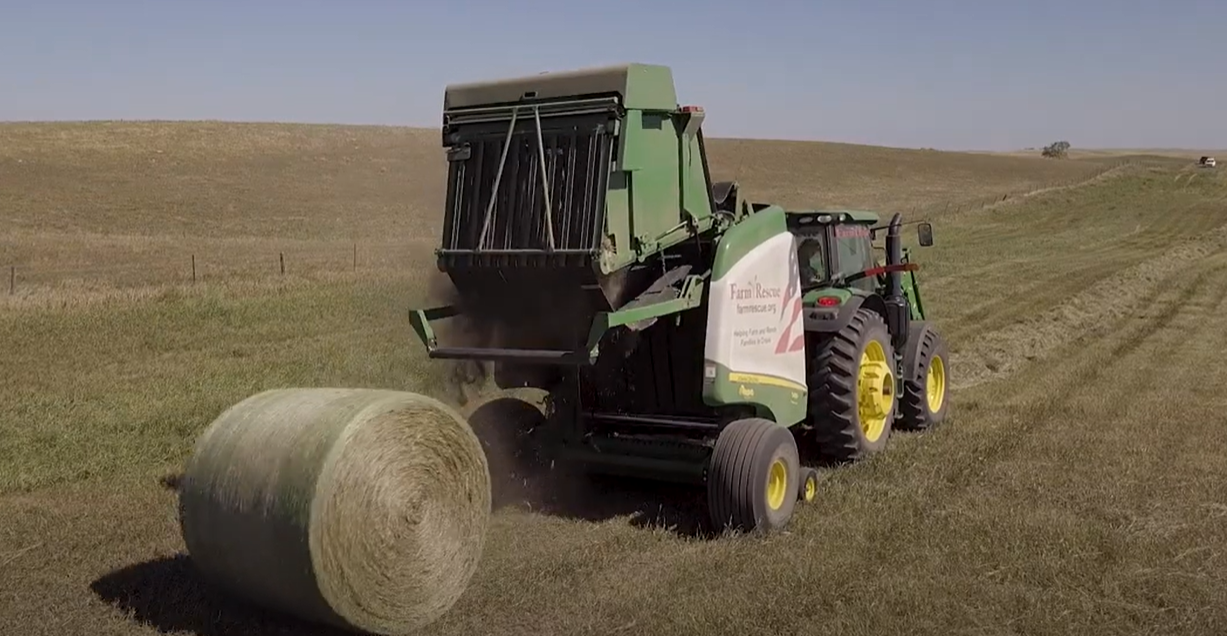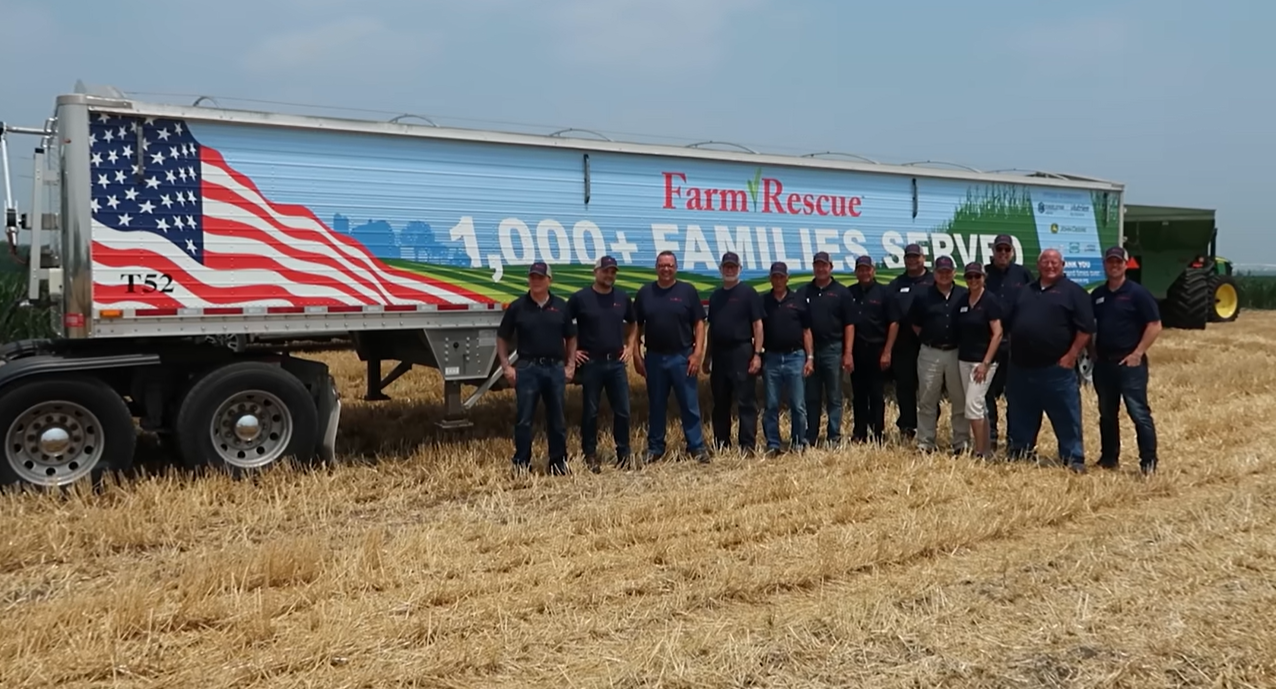Angels In Blue Offer Helping Hands To Farmers In Crisis

When Brad and Megan Pifer and their two young sons walked up the stairs from their basement after an EF3 tornado tore through their farm, they normally would have opened the door and stepped into their dining room.
Instead, they found themselves standing outside. The tornado had destroyed their home and swept most of it away. Also destroyed were the family’s grain bins, sheds and equipment.
“Every shed was down with all of our equipment parked in them, and we were ready to go plant,” Brad told Zach Johnson, aka Millennial Farmer, during an interview. “We had everything hooked up and were just waiting for the fields to dry out. We went from that to not having basically a single piece of equipment we could run for planting season.”

1,000 Farmers And Counting
The Pifers were the 1,000th farm family that Farm Rescue has provided assistance to since its inception in 2005, notes Terry Johnston, development officer.
He says the organization’s mission is to help farmers and ranchers who have experienced a major illness, injury or natural disaster by providing the necessary equipment and volunteer labor – free of charge – to perform time-sensitive services. The organization’s volunteers are often described as angels in blue – for the blue apparel they wear while lending a hand – who have hearts of gold.
“We’re based on the premise of neighbor helping neighbor,” Johnston told Chip Flory, AgriTalk host, on Monday. “We provide farm families and ranches with planting services, harvesting, livestock feeding, and hay hauling in eight states.”

Generosity Helps Nonprofit Expand
Johnston says the ability of Farm Rescue to expand its helping hand is the result of the generosity of many individuals, business sponsors and grantors.
“We have around 500 volunteers that are active and that help us with those farms and ranch families throughout the year,” he says. “We probably average somewhere between 80 and 100 families that we assist each year.”

“Farm Rescue came and planted a little bit of our beans, but they did more planting for the other two farms. We were really concerned about our wheat crop because both of our combines were in the rubble, so they set up their main help for us by coming back to harvest our winter wheat,” Pifer says. His discussion with Millennial Farmer is available via YouTube here.
Easy Application Process
Farm Rescue is currently accepting applications for assistance throughout its entire eight-state service territory. Any farm family experiencing a major illness, injury or natural disaster is encouraged to submit an application at farmrescue.org or by calling 701-252-2017. Referrals are also welcome, Johnston says.
“It’s a very simple application process. They just need to let us know who they are, where they are, and what they need help with, and then we will come out and do a site visit,” Johnston says. “Often we can get things happening in as little as 24 to 48 hours and get them on the schedule to make sure we can get them taken care of in a timely fashion.”
You can listen to the discussion between Johnston and Flory on AgriTalk here:







